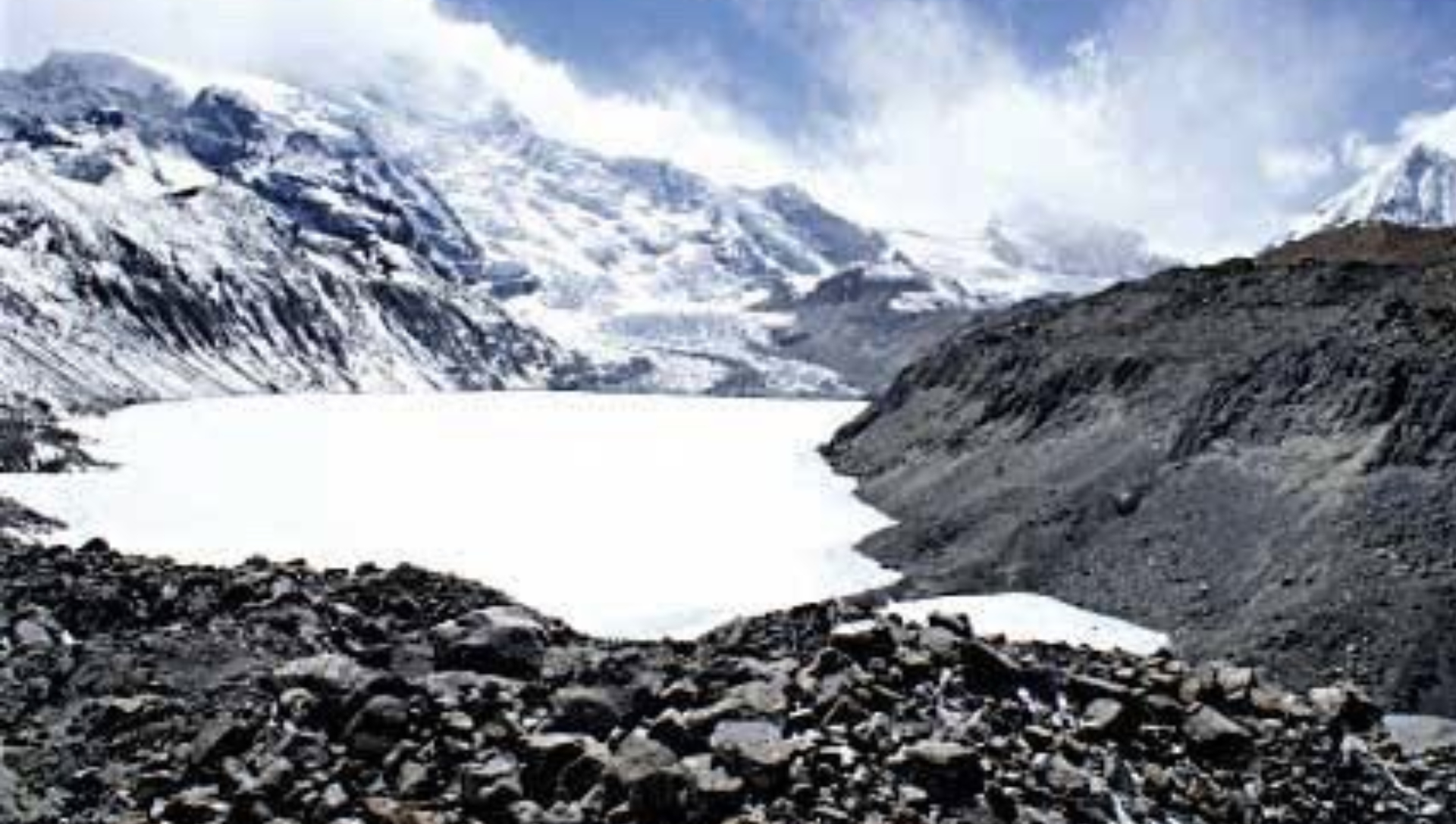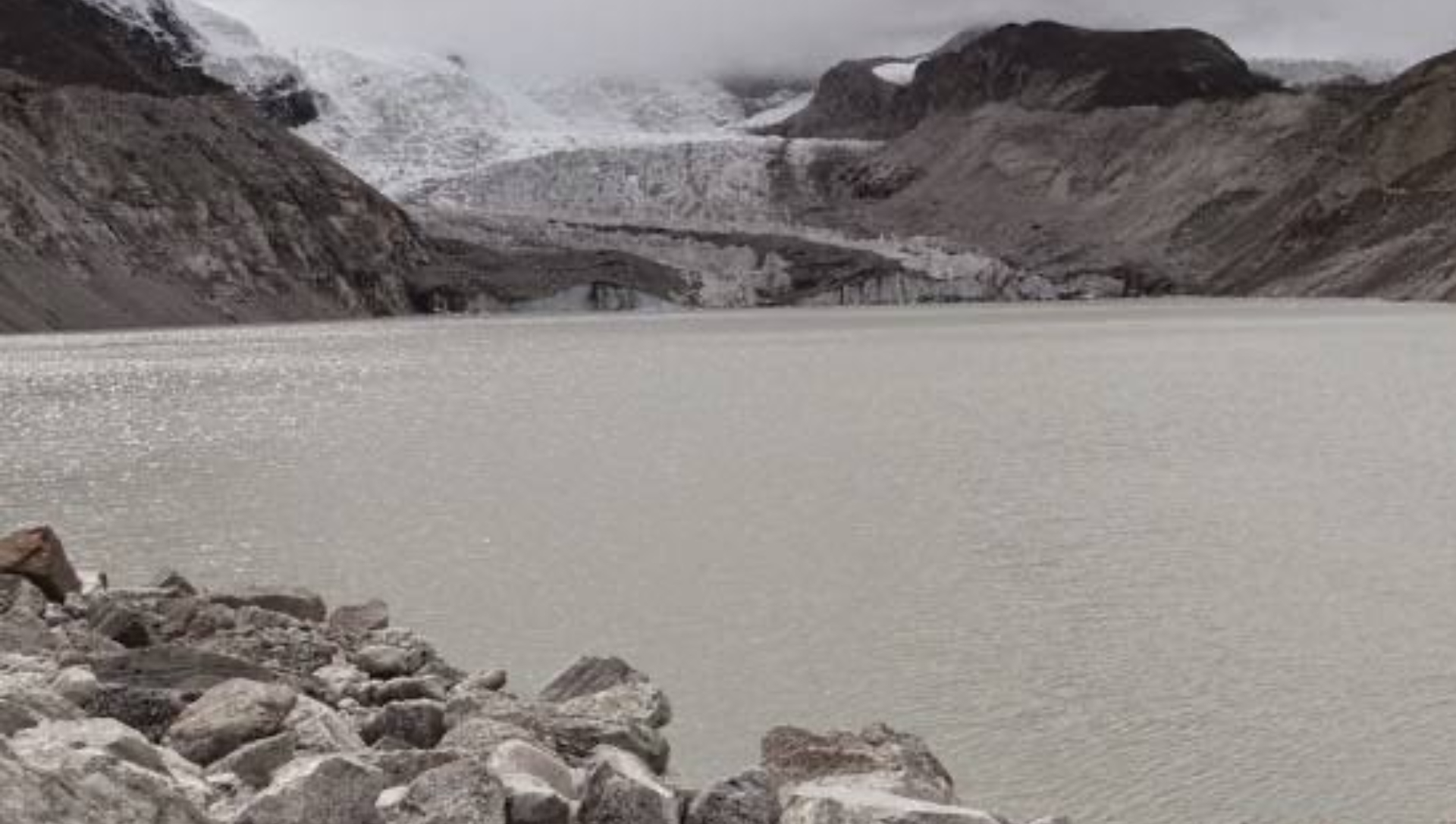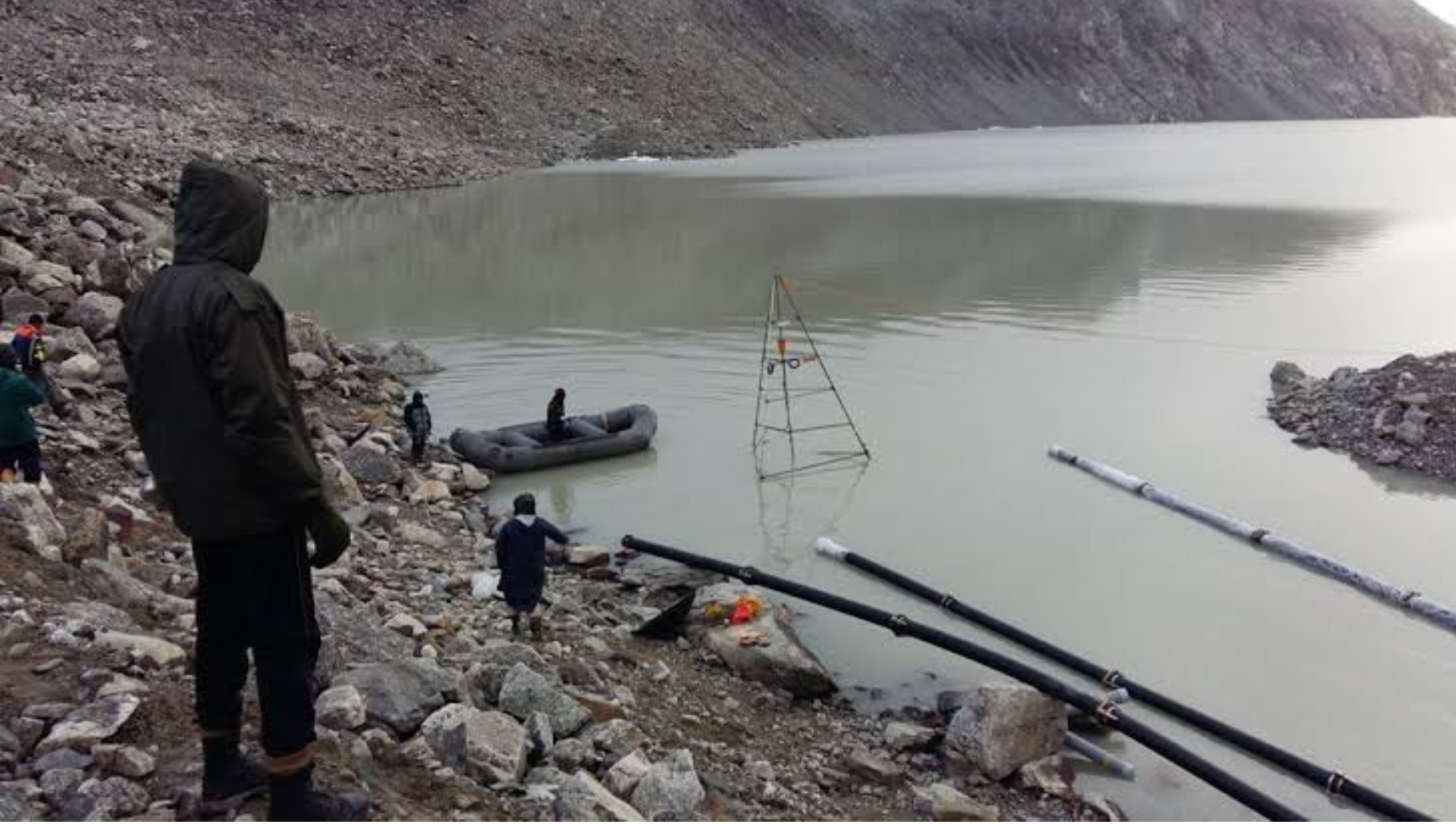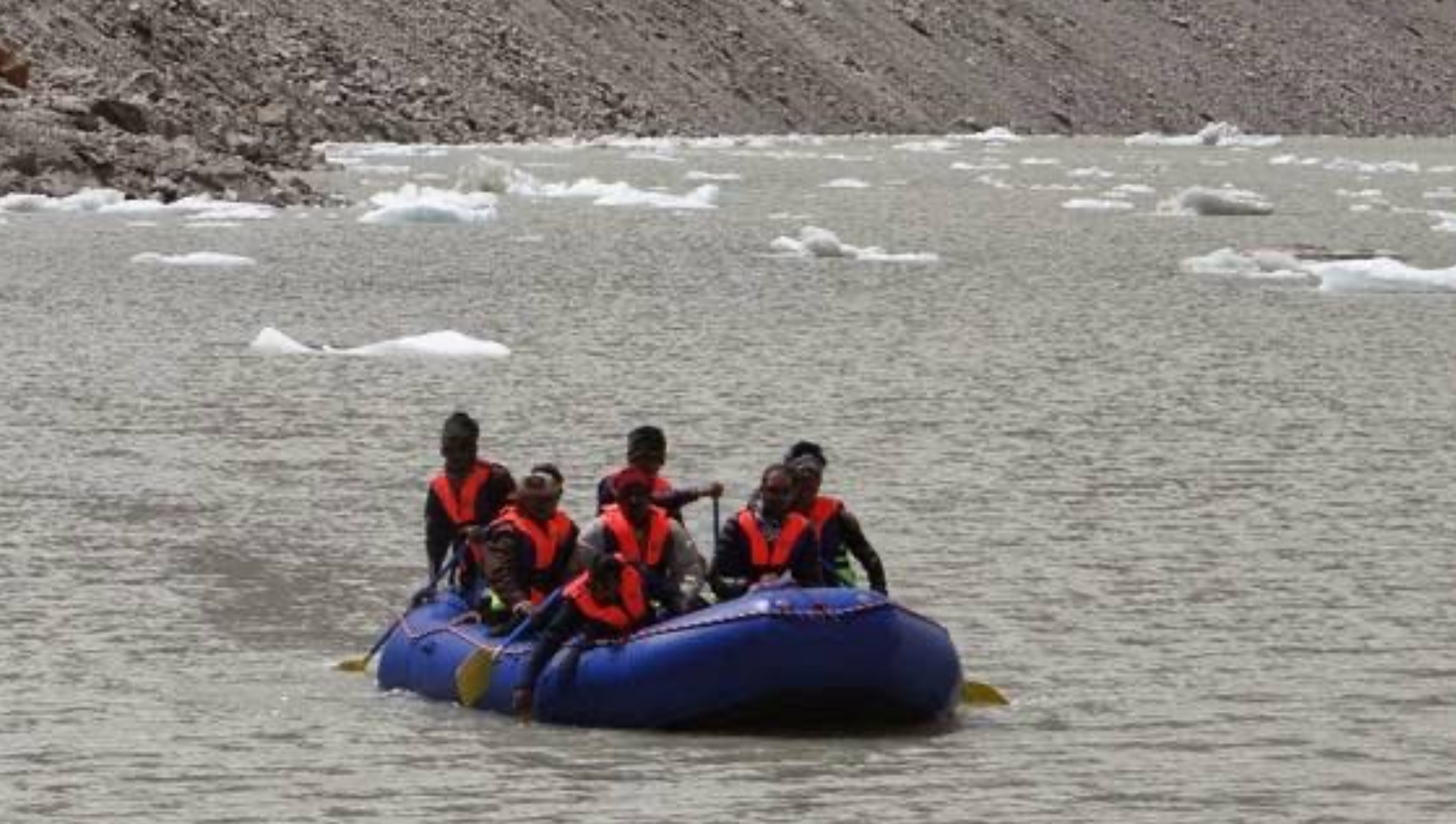


GANGTOK: The Teesta basin in Sikkim’s Himalaya mountains hosts numerous glacial lakes, which include one of the largest and the fastest-growing South Lhonak Lake as well as Shako Cho.
Though these lakes are mainly located in remote and uninhabited mountain valleys, incidents like glacial lake outburst floods (GLOFs) may claim lives and damage assets up to tens of kilometres downstream.
And according to a Sikkim Disaster Management Authority (SDMA) official, the SDMA and Central Water Commission regularly monitor the two vulnerable lakes including GLOF monitoring.
“There are many vulnerable locations in Sikkim and parts of West Bengal, which includes the entire Teesta river basin in Sikkim and sub-Himalayan West Bengal including places such as Lachen Chungthang, Mangan, Dikchu, Singtam, Rangpo, Melli and Teesta,” the official told The New Indian while explaining the regions that might be vulnerable to GLOF incidents.

“These vulnerable locations in Sikkim have a total population of around 60 thousand (10% of Sikkim’s population),” he said.
To control and minimise any potential damage, DG Shrestha, Director, State Science and Technology department, emphasised the urgent need for an Early Warning System (EWS) for these glacial lakes in Sikkim.
“State climate change cell (SCCC)has been continuously monitoring the South Lhonak Lake for many years. After scientific interventions in 2014, the SCCC also played a major role in removing water off South Lhonak Lake in the year 2016 as part of a mitigation approach towards GLOFs,” Shreshtha said while talking about the steps taken to control the effects of GLOFs.
“As a part of the project with Centre for Development and Advanced Computing (CDAC), Pune, the SCCC actively engaged for installation of lake monitoring and information system (water level sensor) at South Lhonak lake in September 2016. The sensor gives the water level of the lake and also monitors sudden fluctuation in water level,” he said.
BP Pradhan, secretary of the State Science and Technology Department, sought active support and participation of the stakeholders in order to achieve a successful and exemplary GLOF EWS.
“The sensor monitors the lake water level when there is sudden fluctuation in water level. The mobile information system is in the process so that any alert message can be given at the local level. The system itself is in an experimental phase,” Pradhan said.
“In the same year (2016), two high definition poly pipes have been installed at 17000 feet glacial Lhonak Lake in North Sikkim to drain out excess water and combat any untoward incident like GLOFs,” he added.

In the past Sikkim government has roped in innovator Sonam Wangchuk from Ladakh to help mitigate the risk posed by GLOFs. Wangchuk is the master innovator who is also the inspiration behind the 2009 Bollywood hit 3 Idiots with superstar Aamir Khan essaying the character.
Wongchuk stressed the mitigation strategy when he talked about global warming and the problems and threats faced by glaciers and lakes worldwide. “Mitigation strategy is needed to improve the safety of people living in the region,” he said.
Wangchuk, an expert on Himalayan glaciers, said “Investigations in Indian Himalaya suggest that most of the glaciers are retreating and also losing mass. This consistent shrinkage in mass and extent can affect stream runoff over a long term.”
“In addition, this process can be further influenced if more glacial lakes are formed due to an increase in debris cover and if black carbon (soot) is transported in accumulation areas of the glaciers. Therefore, continuous monitoring is needed to understand the changing dynamics of Himalayan glaciers,” he said.

According to a report published on the Sikkim forest department website by Binay Kumar and TS Murugesh Prabhu, the increase in the area of the Lhonak and South Lhonak glacial lakes over the last 45 years is significant. Both these lakes have grown in area by 2 times between 1965 and 1989. Lhonak has grown nearly 1.5 times and South Lhonak nearly 2.5 times of their initial size in 1989. The increase in size is not the only factor that lists this lake as a potential GLOF source.
An earthquake of magnitude 4.9 on September 21, 1991 (as reported by the United States Geological Survey) near the parent glacier feeding the South Lhonak Lake and the recent earthquake (magnitude 6.9) of September 18, 2011, approximately 70 km from the lakes, and future earthquakes have the potential to trigger the GLOF events.
The fear of an earthquake looms large in the state as Sikkim falls in Zone-IV of the Indian Seismicity Chart, making the Early Warning Systems on GLOFs an essential component to fighting any life-threatening incident.